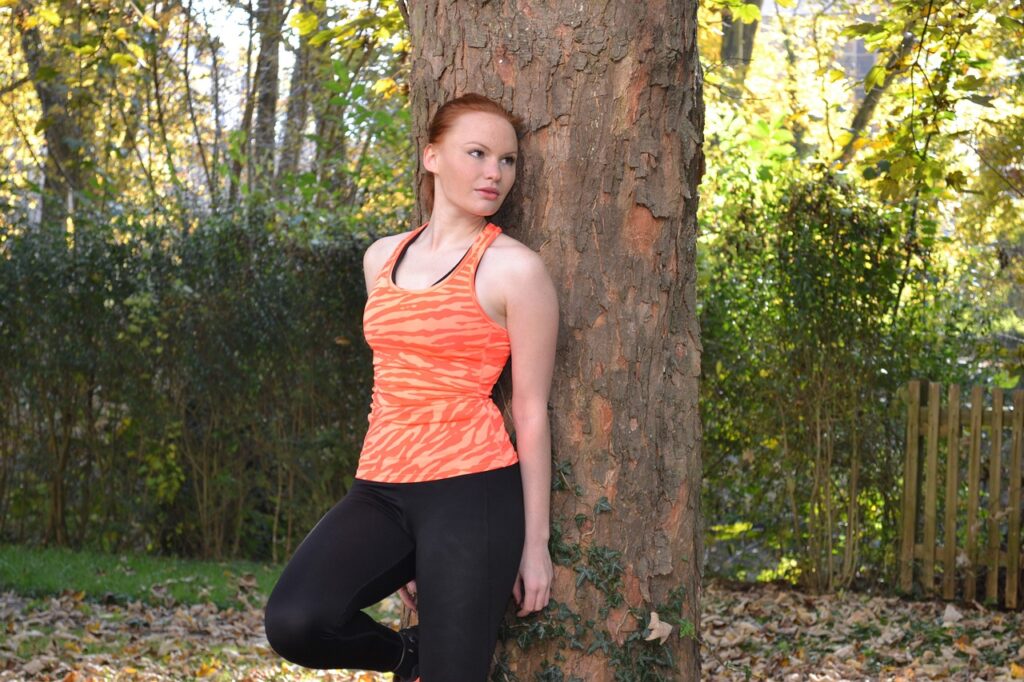Perhaps in every woman’s wardrobe we can find at least one pair of leggings. A piece of fabric has become a woman’s favourite. Some wearers have fallen in love with it so much that they wear leggings to work or out on a date, which may or may not be a bad thing. Here’s a look at the biggest pitfalls of the reviled and beloved garment.
Leggings are no longer just a leisure garment suitable mainly for sports, as they used to be not long ago. Today, it’s a hugely popular wardrobe piece that we wear to work. And even that doesn’t have to be considered a fashion faux pas.
It’s all about what we combine the leggings with for casual wear. Unfortunately, the art of wearing this delicate garment is not mastered by many women wearers. What to watch out for?
Don’t you want to invest in functional materials? That’s a mistake. Because it’s completely different to work out in cotton leggings and those designed for it.
Leggings are comfortable, but if you want to wear them in company, respect the rules of good taste.
For the outdoors and at home, leggings are not only used for these moments. A loved and hated piece has become an integral part of a woman’s wardrobe.
When buying leggings, try them on while moving to see if you have chosen the right size.
The main thing to remember is that no matter what the trends are, you always need to take your own proportions into account. Few of us can afford to wear leggings in all their glory, perhaps with a crop top or tight tank top.
Judgement is more than desirable here. If you really want to go out in leggings other than for sport, it is ideal to complement them with a sweater or sweatshirt dress, a longer shirt or a poncho.
Leggings have caught on in fashion in the so-called atleasure style. These are outfits that include sporty pieces such as bold sneakers, sweatshirts or just leggings in different lengths. However, I would definitely recommend this style only to the younger generation, who do not have to deal with any work or social dress code.
Leggings are comfortable, but if you want to wear them out and about, respect…
What not to underestimate?
When buying leggings, most women are primarily concerned with design, but there are other key parameters. And it’s not just about comfort. It’s not just about a well-fitting size, the material and cut also play a significant role. Although it might seem that leggings are all tailored the same, this is not the case.
Don’t just choose leggings based on the size on the label. If you’re buying them in person, feel free to try on two different sizes in the cubicle to compare.
If you’re looking for a new piece for more challenging physical activities, it’s a good idea to try the leggings on in the fitting room. Do a squat, jump up high, do a lunge forward and backward. The leggings shouldn’t bulge too much at the seams. If you choose a size that is too small, the leggings can slip out of the tighter material, reducing their comfort.
If you just want the leggings to flatter your silhouette, the cut plays an important role. For women with narrower waists and wider hips, we recommend midriff-skimming models, while leggings with a less slimming, more basic cut are suitable if the lady has a wider waist.
When buying leggings, try them on in motion to see if you have chosen…
For home and outdoors
It’s no secret that it’s ideal to buy clothes for sports. That is, one that is made from functional materials. Specially developed fabrics wick away sweat well, are flexible, adapt to movement and maintain a constant body temperature. Even so, many women prefer the cheaper and more comfortable cotton. However, they are making a huge mistake.
Cotton may feel good on the skin and be sufficient for time spent at home, but it is not functional in terms of performance. It absorbs moisture quickly, dries very slowly and then becomes cold. If you prefer natural fibres, choose 100% merino wool clothing.
The season also plays a role. For outdoor activities, winter functional leggings should be combed on the inside. This will retain heat and wick away sweat at the same time. In colder temperatures, clothing should be more wind and water resistant, while for sunnier days a weaker, quick-drying and breathable material is more suitable.
